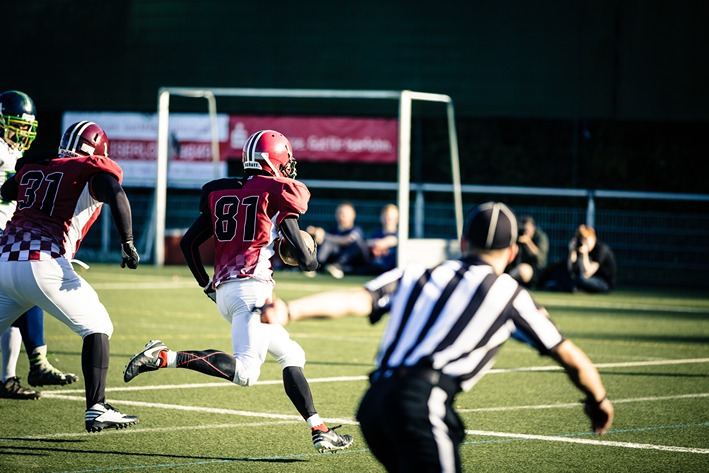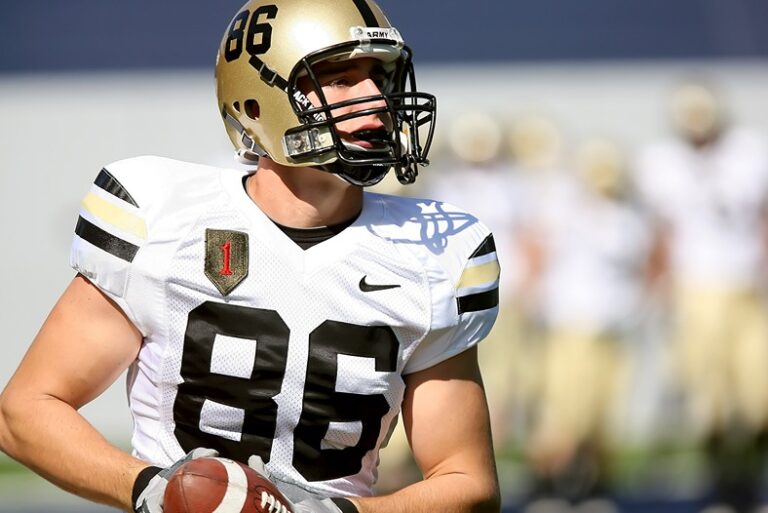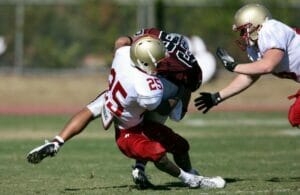
What is a Tight End in Football
Written By: Gridiron Elite Training

What is a Tight End in Football
Written By: Gridiron Elite Training
For those who are new to the world of American football, understanding the various positions and roles can be quite confusing. One of the most versatile and crucial positions on the football field is the tight end. In this guide, we will explore the football tight end position in-depth, discussing its importance, responsibilities, and the skills required to excel in this role. We will also touch upon some of the greatest tight ends in the history of football.
So, what is a tight end in football? Let’s dive in and find out.

Understanding the Tight End Position in Football
A tight end (TE) is a hybrid position that combines the roles of both an offensive lineman and a receiver. Their primary responsibilities include blocking for the quarterback and running backs, as well as catching passes from the quarterback. Due to the dual nature of their duties, tight ends need to possess a unique combination of size, strength, and agility.
Located on the offensive line, tight ends usually line up next to the offensive tackles. They can be positioned either on the left or right side of the line, depending on the team’s strategy and the specific play call. Because of their strategic placement, tight ends can significantly impact both the running and passing game, making them a crucial component of a successful offense.
The Role and Responsibilities of a Tight End in Football
The tight end position in football is incredibly versatile, with its responsibilities varying from play to play. Here are the primary roles a tight end may be asked to fulfill:
- Blocking: The tight end is often called upon to help protect the quarterback or create running lanes for the running back. This requires them to engage with defensive linemen, linebackers, or defensive backs, depending on the specific play call.
- Receiving: Tight ends are also pass-catching targets for the quarterback. They run various routes, from short, quick passes to longer downfield receptions. Their size and strength often make them difficult for smaller defensive backs to cover, providing a significant advantage in the passing game.
- Special Teams: Tight ends may also play a role on special teams, typically as part of the kickoff or punt return units, or in field goal and extra point protection.
The Skill Set of a Successful Tight End

To excel as a tight end in football, a player must possess a unique combination of physical attributes and skills. Some of the most important qualities for a tight end include:
- Size and Strength: Tight ends need to be big and strong enough to block powerful defensive linemen and linebackers, while also possessing the agility and speed to separate from defenders in the passing game.
- Hands and Catching Ability: A successful tight end must have reliable hands and the ability to catch passes in traffic. This often involves making contested catches and holding onto the ball after taking hard hits from defenders.
- Route Running: Tight ends must be proficient in running various pass routes and have the ability to deceive defenders with their movements.
- Football IQ: A high football IQ is essential for tight ends, as they need to understand the complexities of the offensive playbook, read defenses, and make adjustments on the fly.
- Work Ethic: The best tight ends are known for their dedication to improving their craft and their commitment to the team’s success.
The Evolution of the Tight End Position in Football
Over the years, the tight end position in football has evolved to become more focused on the passing game. As NFL offenses have become more pass-heavy, the role of the tight end has expanded to include more receiving responsibilities. This shift has led to the emergence of a new breed of athletic, pass-catching tight ends who can create mismatches for opposing defenses. These modern tight ends possess the size and strength to block effectively, while also having the speed and agility of a wide receiver.
Concluding Tips For Tight Ends

The tight end position in football is an incredibly versatile and critical component of a successful offense. Combining the responsibilities of both a lineman and a receiver, tight ends must possess a unique skill set that allows them to excel in both the running and passing game.
The evolution of the position has led to the emergence of a new breed of athletic tight ends who can create mismatches and contribute significantly to their team’s success. By understanding the role and responsibilities of a tight end, even a beginner can appreciate the importance of this dynamic position on the football field.
Subscribe To Get Updates On Newly Released Articles
Don't forget to share this post!
Continue Reading More Football Recruiting Tips Below
Related Articles

5 Keys to the College Football Recruiting Process
If you are a high school football player, it’s easy to get lost in the college football recruiting process. This article will break down key stages of the recruiting process.

Junior College Football Recruiting
If you’re thinking about playing college football, read this article for quick tips on the process of juco college football recruiting.

Complete Guide to Football Recruiting Rankings
Find out why football recruiting rankings are important, where they come from, what they mean and how they affect your recruiting strategy.

Gridiron Elite Training was started to help educate and provide football players with a community to receive proper training and guidance.
We created “The Gridiron Elite Academy” which is an online football performance network that provides football players of all levels with sports performance workout programs, football position-specific drills, mindset coaching, mental toughness training, recruiting guidance and help, and nutrition programs.


